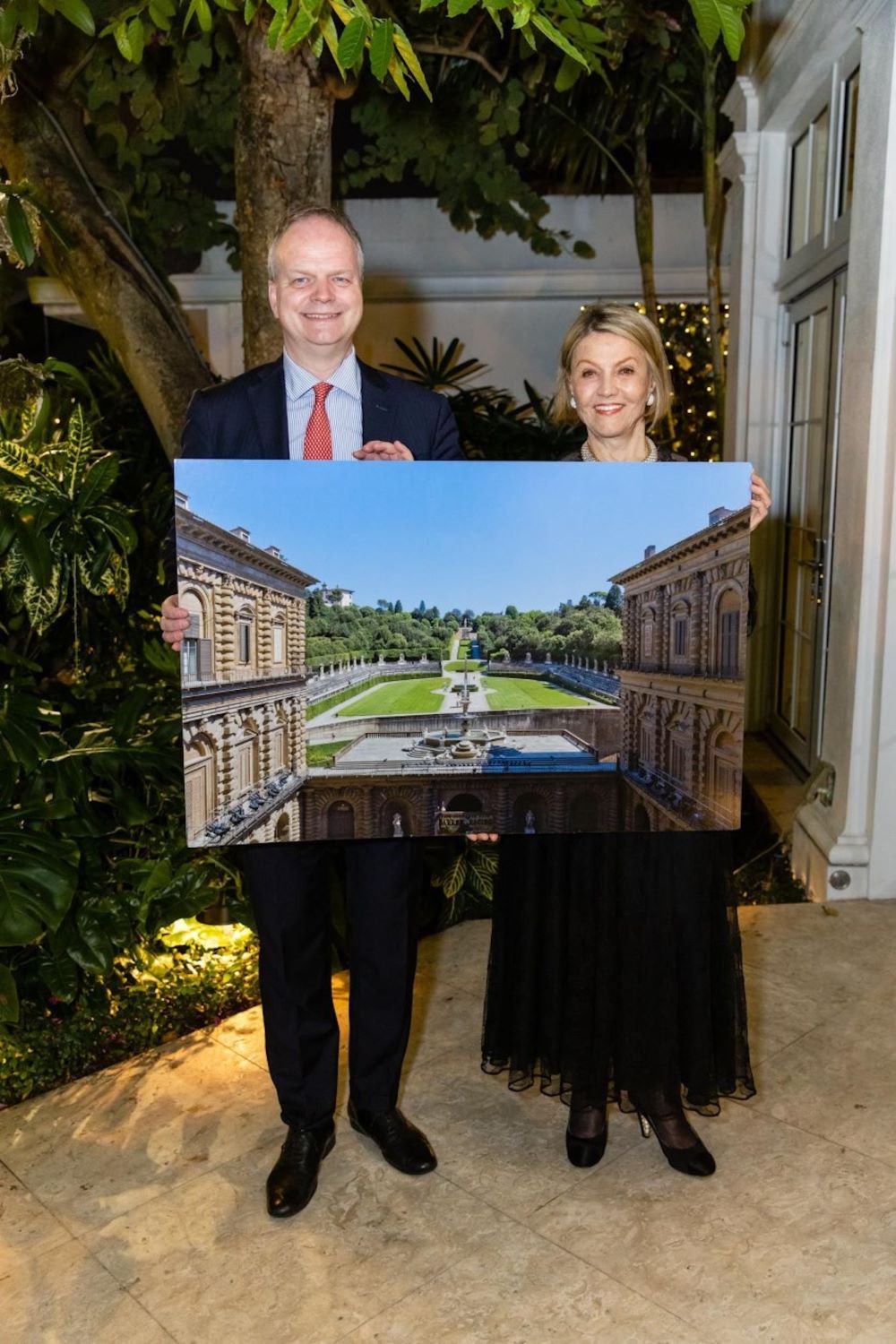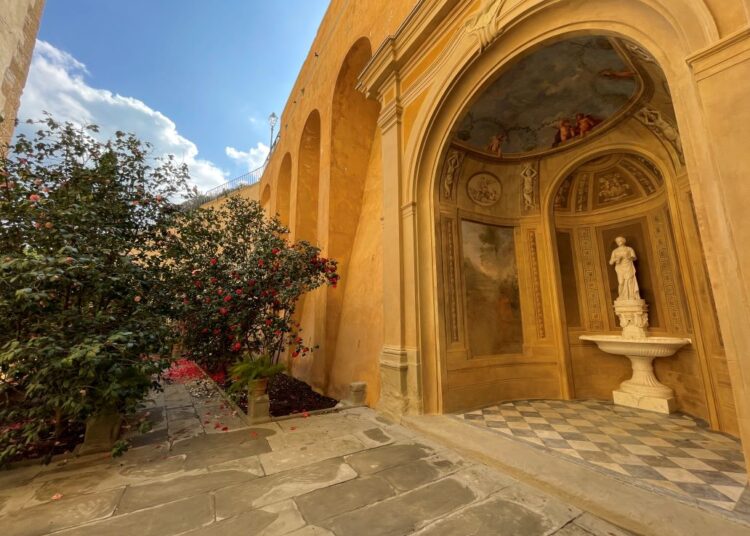As I wrote in my article, “Eleanora di Toledo and the Medici’s Florentine Court on Exhibition at the Pitti Palace”, published here on February 9th, in 1550 the Spanish-born, Naples-raised wife of Cosimo dei Medici “purchased with her own funds the Palazzo Pitti and the land that became the Boboli Gardens”. Now another well-known patron-of-the-arts Veronica Atkins, the Russian-born, Vienna-raised opera singer and widow of the world-famous New York cardiologist Robert C. Atkins and author of his namesake low-carb diet, has donated nearly $5,000,000 to the Uffizi Galleries. This the largest gift ever made by a private individual to a Florentine Museum will be used to completely restore the Amphitheater of the Boboli Gardens, as part of an extensive “Boboli 2030” program to revitalize the Medici greenery.

According to the Uffizi’s press release, “the operations will start in the coming months and will last between two and three years. The dual purpose is to protect and restore the many varied architectural, sculptural and plant components of this impressive but very delicate space to the best conditions and, at the same time, to enhance and ensure the recovery of its original purpose of hosting performances, and, in particular, opera music.”
Eleanora di Toledo had originally conceived the 11 acres of gardens she named “Boboli” (probably her Spanish mispronunciation of “Bogoli” or “Borgoli”, most likely the surname of the family who previously owned the land) as a healthy pleasure garden for her eight surviving children with an amphitheater of purely plant forms for theatrical and musical performances. She commissioned the sculptor, architect and set designer Niccolò Tribolo to construct it, but he died almost immediately in 1550, the same year as Eleanora’s purchase. Although other artists took over immediately: Bartolomeo Ammannati the structure, Giorgio Vasari the additional planning, and Bernardo Buontalenti the ancient-world-inspired sculptures, fountains and a grotto, Eleanora died in 1562 before their work was completed.
From 1621 to 1634 architectural elements were gradually added and the first theatrical performance was in 1628 during the wedding of Margherita de’ Medici and Odoardo Farnese. Over the next two centuries the amphitheater became the venue par excellence for Grand Ducal festivities, the last one hosted in 1839 by Leopold II. After a century-long pause it was used again to stage operas, the last time being in 1965 for Franco Zeffirelli’s staging of Jacopo Peri’s Euridice.

“’Boboli 2030’ commented Atkins at the donation ceremony, “combines my three greatest loves: nature, art and music. I can’t wait to attend the premiere of the opera that will resound in this magical and unique place in the world after the restoration is finished.”
Her “Boboli 2030” gift is not her first to the Uffizi. An American Friend of the Uffizi, last October she donated one of the world’s best pianos for concerts in the Pitti Palace’s Sala Bianca. On that occasion she was awarded the Keys to the City of Florence by Deputy Mayor Alessia Bettini, in the presence of the Consul General of the United States, Ragini Gupta, Eike Schmidt, the Director of the Uffizi, among other dignitaries. Less than two months later she was a major donor for the production of Boris Godunov at Milan’s Teatro La Scala, also attended on the season’s traditional opening night, December 7th-St. Ambrose Day-by Italy’s President of the Republic, Sergio Mattarella, Italy’s Prime Minister, Giorgia Meloni, and Italy’s Minister of Culture, Gennaro Sangiuliano.
Having been recognized as one of America’s top 50 philanthropists by Business Week and Newsweek, Atkins, co-author of her late husband’s diet books and a gourmet chef, is a Managing Director of the Metropolitan Opera, a trustee of the Parrish Art Museum in Water Mill, New York, near Montauk and President and Chairperson of the arts-supporting Dr. Robert C. and Veronica Atkins Foundation. She strongly believes that art and culture are fundamental cornerstone of today’s society and that they improve the quality of human life.
The Boboli Gardens opened to the public in 1766, that is all but a secret corner, the Camelia Garden, created in the mid-17th century for Prince Mattias de’ Medici, the younger brother of Grand Duke Ferdinand II, probably as his love nest.
Only a few days after Atkins’ gift, Director of the Uffizi Eike Schmidt announced that the Camelia Garden, with its century-old trees, waterworks, artificial grotto, and frescoed niches for privacy, would open to the public for the very first time ever on April 1 for the months of April and May. There is no extra entrance fee and no reservation necessary, but access is only by an hour-long guided tour for no more than 15 people at a time. They will take place from Tuesday through Sunday at 11 AM and 12, 13, 15, 16, and 17 PM. Otherwise entrance to The Boboli Gardens, open daily, is 10 euros or combined with the Pitti Palace 22 euros.












